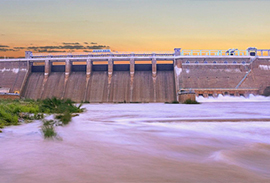1. Introduction to Cloud Architecture
What is a Cloud Architect:
A Cloud Architect is responsible for designing, implementing, and managing cloud-based solutions for an organization. They oversee the cloud computing strategy, which includes cloud adoption plans, cloud application design, and cloud management and monitoring. A Cloud Architect ensures that cloud systems meet business objectives, are secure, and can scale efficiently.
Key Responsibilities of a Cloud Architect:
- Design Cloud Solutions: Develop cloud architecture that aligns with business needs.
- Manage Cloud Services: Monitor, maintain, and optimize cloud services.
- Ensure Security: Implement security best practices across cloud environments.
- Optimize Performance: Balance load, ensure high availability, and optimize costs.
- Collaborate with DevOps: Integrate cloud architecture with DevOps processes for CI/CD.
Benefits of Cloud Computing:
- Scalability: Easily scale infrastructure up or down as needed.
- Cost-Effectiveness: Pay only for the resources used.
- Flexibility: Access to a wide range of services and tools.
- Security: Built-in security features such as encryption and identity management.
- Disaster Recovery: Cloud platforms provide backup and failover services.
Cloud Service and Deployment Models:
- Cloud Service Models: IaaS, PaaS, SaaS (covered in the next section).
- Deployment Models: Public, Private, Hybrid, and Multi-Cloud.
2. Cloud Service Models
Infrastructure as a Service (IaaS):
- IaaS provides virtualized computing resources over the internet. It includes services like compute, storage, and networking, where you have full control over the infrastructure but without managing the physical hardware.
- Examples: Amazon EC2, Azure Virtual Machines, Google Compute Engine.
Platform as a Service (PaaS):
- PaaS offers a platform allowing developers to build, deploy, and manage applications without worrying about the underlying infrastructure.
- Examples: AWS Elastic Beanstalk, Azure App Services, Google App Engine.
Software as a Service (SaaS):
- SaaS provides software applications over the internet, managed entirely by the service provider.
- Examples: Google Workspace, Microsoft Office 365, Salesforce.
3. Cloud Deployment Models
Public Cloud:
- Public Cloud is hosted by third-party providers and shared among multiple customers. It’s the most popular model for cloud services because of its scalability and cost-effectiveness.
- Examples: AWS, Azure, Google Cloud.
Private Cloud:
- Private Cloud is dedicated to a single organization. It can be hosted on-premise or by a third-party provider, offering higher security and control.
- Examples: VMware vCloud, OpenStack.
Hybrid Cloud:
- Hybrid Cloud combines public and private clouds, allowing for greater flexibility by moving workloads between them as needed.
- Examples: AWS Outposts, Azure Stack.
Multi-Cloud:
- Multi-Cloud is the use of multiple cloud providers for different services to avoid vendor lock-in and optimize performance and cost.
- Examples: A combination of AWS, Azure, and Google Cloud.
4. Key Components of Cloud Architecture
Compute Services:
- Virtual Machines (VMs): Provides compute capacity in the cloud.
- Examples: AWS EC2, Azure VMs, Google Compute Engine.
- Containers: Lightweight, standalone, executable software packages.
- Examples: Docker, Kubernetes.
- Serverless: Runs code without provisioning servers.
- Examples: AWS Lambda, Azure Functions.
Storage Services:
- Block Storage: Persistent storage that is attached to VMs.
- Examples: AWS EBS, Azure Managed Disks.
- Object Storage: Scalable storage for unstructured data.
- Examples: AWS S3, Azure Blob Storage, Google Cloud Storage.
- File Storage: Managed file systems for shared access.
- Examples: AWS EFS, Azure File.
Networking Services:
- Virtual Networks: Isolated networks within the cloud.
- Examples: AWS VPC, Azure VNet.
- Load Balancing: Distributes traffic across multiple instances.
- Examples: AWS Elastic Load Balancer (ELB), Azure Load Balancer.
- DNS: Provides domain name resolution.
- Examples: AWS Route 53, Azure DNS.
Security Services:
- IAM (Identity and Access Management): Manages permissions and access.
- Examples: AWS IAM, Azure AD, Google Cloud IAM.
- Firewalls and Security Groups: Controls inbound and outbound traffic.
- Examples: AWS Security Groups, Azure NSGs.
- Encryption: Encrypts data in transit and at rest.
- Examples: AWS KMS, Azure Key Vault.
Management and Monitoring:
- Cloud Monitoring: Tracks performance and usage.
- Examples: AWS CloudWatch, Azure Monitor, Google Cloud Monitoring.
- Logging: Centralized collection of logs.
- Examples: AWS CloudTrail, Azure Log Analytics.
Automation and Orchestration:
- Orchestration Tools: Automates the deployment of infrastructure.
- Examples: AWS CloudFormation, Terraform, Ansible.
5. Cloud Platforms and Providers
AWS Overview and Services:
- Compute: EC2, Lambda, ECS, EKS.
- Storage: S3, EBS, Glacier.
- Networking: VPC, Route 53, Direct Connect.
- Database: RDS, DynamoDB, Redshift.
- Machine Learning: SageMaker, Lex, Polly.
Microsoft Azure Overview and Services:
- Compute: Azure VMs, Azure Functions, AKS.
- Storage: Blob Storage, Azure Files.
- Networking: VNet, Azure Load Balancer.
- Database: Azure SQL, Cosmos DB.
- AI and ML: Azure Cognitive Services, Azure Machine Learning.
Google Cloud Platform (GCP) Overview and Services:
- Compute: Compute Engine, Cloud Functions, GKE.
- Storage: Cloud Storage, Persistent Disks.
- Networking: VPC, Cloud Load Balancing.
- Database: Cloud SQL, Bigtable, Firestore.
- AI and ML: Google AI Platform, AutoML, TensorFlow.
Comparison of Major Cloud Providers:
| Feature/Service | AWS | Azure | Google Cloud |
| Compute | EC2, Lambda | VMs, Azure Functions | Compute Engine, GKE |
| Storage | S3, EBS | Blob, Managed Disks | Cloud Storage, Persistent Disks |
| Networking | VPC, Route 53 | VNet, ExpressRoute | VPC, Cloud DNS |
| Databases | RDS, DynamoDB | Azure SQL, Cosmos DB | Cloud SQL, BigQuery |
| Machine Learning | SageMaker, Lex | Azure ML, Cognitive Services | AI Platform, TensorFlow |
6. Designing Scalable and Resilient Cloud Architectures
High Availability (HA) and Disaster Recovery (DR):
- High Availability: Design systems with no single point of failure using techniques like auto-scaling, load balancing, and data replication.
- Disaster Recovery: Plan for data recovery with backups and geographic redundancy using services like AWS S3 cross-region replication, Azure Site Recovery.
Auto-Scaling and Load Balancing:
- Auto-Scaling: Automatically adjusts the number of compute instances based on demand.
- Examples: AWS Auto Scaling, Azure Scale Sets.
- Load Balancing: Distributes traffic across multiple instances to ensure no instance is overloaded.
- Examples: AWS ELB, Azure Load Balancer, GCP Load Balancing.
Fault Tolerance and Redundancy:
- Fault Tolerance: Design systems to automatically handle failures using failover strategies.
- Redundancy: Use multiple availability zones and data centers to replicate critical resources.
Monitoring and Alerting Strategies:
- Monitoring: Continuously monitor health, performance, and security.
- Tools: AWS CloudWatch, Azure Monitor, Google Cloud Monitoring.
- Alerting: Set up automated alerts for failures or performance degradation.
7. Networking in the Cloud
Virtual Private Cloud (VPC):
- VPC: A logically isolated section of the cloud where you can define your own network configurations, including subnets, route tables, and gateways.
- Examples: AWS VPC, Azure VNet, Google VPC.
VPNs and Direct Connections:
- VPN: Securely connects on-premises networks to cloud environments using encrypted tunnels.
- Examples: AWS VPN, Azure VPN Gateway.
- Direct Connections: Dedicated private connections for higher speed and security.
- Examples: AWS Direct Connect, Azure ExpressRoute.
Load Balancers and Application Gateways:
- Load Balancers: Distribute incoming traffic to multiple servers.
- Examples: AWS ELB, Azure Load Balancer, GCP Load Balancer.
- Application Gateways: Specialized load balancers for web applications with SSL termination, Web Application Firewall (WAF), etc.
- Examples: AWS ALB, Azure Application Gateway.
DNS Services:
- AWS Route 53: A scalable and highly available DNS service that routes traffic to domain names.
- Azure DNS: Provides DNS domain hosting services for managing domain names in Azure.
8. Storage Solutions in Cloud Architecture
- Block Storage (EBS, Azure Disk):
- Block Storage: Provides raw storage volumes that can be attached to instances.
- Examples: AWS EBS, Azure Managed Disks, Google Persistent Disks.
2. Object Storage (S3, Azure Blob Storage):
- Object Storage: Stores large amounts of unstructured data.
- Examples: AWS S3, Azure Blob Storage, Google Cloud Storage.
3. File Storage (EFS, Azure File):
- File Storage: Provides shared file storage that can be mounted across multiple instances.
- Examples: AWS EFS, Azure Files, Google Filestore.
4. Backup and Archival Solutions:
- Backup: Automate data backups with tools like AWS Backup, Azure Backup.
- Archival: Store infrequently accessed data in cheaper tiers such as AWS Glacier, Azure Archive Storage.
9. Security Best Practices for Cloud Architects
Identity and Access Management (IAM):
- IAM: Control who can access specific resources using roles and policies.
- Examples: AWS IAM, Azure AD, Google Cloud IAM.
- Best Practices: Implement least privilege, use IAM roles, enable MFA.
Encryption in Transit and at Rest:
- Encryption in Transit: Use TLS to encrypt data in transit.
- Encryption at Rest: Encrypt data using services like AWS KMS, Azure Key Vault.
Firewalls and Security Groups:
- Security Groups: Control inbound and outbound traffic to instances.
- Firewalls: Network-based security policies for protecting workloads.
Key Management Services (KMS):
- KMS: Securely store and manage encryption keys.
- Examples: AWS KMS, Azure Key Vault, Google Cloud KMS.
Securing APIs and Microservices:
- Best Practices: Use API gateways, implement rate limiting, and authenticate with OAuth2.
10. Cloud Automation and Infrastructure as Code (IaC)
What is Infrastructure as Code (IaC):
- IaC: Managing and provisioning infrastructure through machine-readable definition files rather than through physical hardware configuration or interactive configuration tools.
Terraform for Multi-Cloud Automation:
- Terraform: An open-source tool that allows for managing infrastructure across multiple cloud providers.
- Features: Automate provisioning and track infrastructure changes.
AWS CloudFormation and Azure Resource Manager (ARM):
- CloudFormation: Automates the setup of AWS resources.
- Azure ARM: Allows the automation of resource management in Azure using templates.
CI/CD Integration for Cloud Infrastructure:
- CI/CD Tools: Jenkins, GitLab CI, CircleCI can automate the deployment of IaC templates for cloud resources.
Configuration Management Tools (Ansible, Chef, Puppet):
- Ansible: Agentless tool for automating cloud infrastructure provisioning.
- Chef and Puppet: Configuration management tools that help automate server configuration, patching, and deployment.
11. Serverless Architectures
What is Serverless:
- Serverless: An execution model where the cloud provider dynamically manages the infrastructure, allowing developers to focus on code without managing servers.
AWS Lambda, Azure Functions, Google Cloud Functions:
- AWS Lambda: Serverless compute service for running code in response to events.
- Azure Functions: Allows you to execute event-driven code without managing servers.
- Google Cloud Functions: Event-driven serverless functions in Google Cloud.
Use Cases for Serverless Architectures:
- Event-Driven Workflows: Running functions in response to database changes, file uploads, or HTTP requests.
- Microservices: Breaking down applications into independent services.
Event-Driven Architecture:
- Definition: A software architecture where events trigger the execution of specific actions or workflows.
- Benefits: Efficient resource utilization and scalability.
Best Practices for Serverless Security:
- Least Privilege: Ensure functions have the least permissions necessary.
- Monitoring: Track function usage and costs.
- Throttling: Limit the number of invocations to prevent misuse.
12. Containerization and Orchestration
What are Containers:
- Containers: Lightweight, portable, and consistent environments to run applications, isolating them from the host environment.
- Popular Tools: Docker.
Docker Basics:
- Docker: An open-source platform for automating the deployment of applications in containers.
- Dockerfile: Defines how a container should be built.
Container Orchestration with Kubernetes:
- Kubernetes: Open-source system for automating the deployment, scaling, and management of containerized applications.
Kubernetes Architecture and Components:
- Master Node: Controls the cluster, responsible for scheduling and deployment.
- Worker Nodes: Where the containers run.
- Pods: The smallest deployable units in Kubernetes, consisting of one or more containers.
Kubernetes in Cloud (EKS, AKS, GKE):
- Amazon EKS: Fully managed Kubernetes service in AWS.
- Azure AKS: Managed Kubernetes service in Azure.
- Google GKE: Managed Kubernetes service in Google Cloud.
13. Cost Management and Optimization in the Cloud
Understanding Cloud Billing Models:
- Pay-as-You-Go: Pay only for the resources consumed.
- Reserved Instances: Pre-purchase capacity at discounted rates for long-term workloads.
Cost Management Tools:
- AWS Cost Explorer: Analyze cloud spend and forecast future costs.
- Azure Cost Management: Provides insights into cloud spending and resource usage.
Right-Sizing and Auto-Scaling:
- Right-Sizing: Adjusting resource allocations to avoid over-provisioning or underutilization.
- Auto-Scaling: Automatically increase or decrease resources based on actual demand.
Reserved Instances and Savings Plans:
- Reserved Instances: Provides discounts for committing to use cloud resources for a long period (e.g., 1 year or 3 years).
Monitoring and Reducing Cloud Costs:
- Best Practices: Use tagging, monitor underutilized resources, and use spot instances for transient workloads.
14. Compliance and Governance in Cloud Architecture
Cloud Governance Framework:
- Cloud Governance: Defines the rules, policies, and standards for managing cloud resources.
Compliance Standards (GDPR, HIPAA, PCI DSS):
- GDPR: General Data Protection Regulation for data privacy in the EU.
- HIPAA: Protects sensitive patient health information.
- PCI DSS: Data security standards for payment card transactions.
Policy Enforcement and Auditability:
- Enforce Policies: Use tools like AWS Config and Azure Policy to enforce rules and monitor compliance.
Cloud Security Posture Management (CSPM):
- CSPM: Automatically detect and remediate risks across cloud services.
- Examples: AWS Security Hub, Prisma Cloud.
Cloud Risk Management:
- Best Practices: Regular risk assessments, vulnerability scans, and adherence to security compliance standards.
15. Cloud Migration Strategies
Types of Cloud Migration:
- Rehost (Lift and Shift): Move existing workloads to the cloud without changing the underlying architecture.
- Refactor: Modify the application to take advantage of cloud-native features.
- Rearchitect: Redesign applications to be more scalable and resilient in the cloud.
Cloud Migration Tools:
- AWS Migration Hub: Tracks the progress of application migrations to AWS.
- Azure Migrate: Helps discover, assess, and migrate workloads to Azure.
- Google Migrate: Assists in the migration of VMs and databases to Google Cloud.
Cloud Migration Phases:
- Assessment: Evaluate the current environment and identify workloads to migrate.
- Planning: Define the migration strategy, identify dependencies, and prepare resources.
- Migration: Move workloads to the cloud using the chosen migration method.
- Testing: Ensure the migrated workloads are functioning correctly in the new environment.
- Optimization: Fine-tune performance and cost post-migration.
Data Migration Best Practices:
- Use Data Transfer Tools: AWS DataSync, Azure Data Factory, Google Transfer Appliance.
- Backup Before Migration: Always take backups before performing migrations.
Challenges and Solutions in Cloud Migration:
- Downtime: Plan for minimal downtime by using replication techniques and incremental migrations.
- Latency: Monitor performance post-migration and optimize resources to reduce latency.
- Data Integrity: Ensure the accuracy and completeness of data after migration by using validation tools.
16. Edge Computing and Cloud Architectures
What is Edge Computing:
- Edge Computing: A distributed computing paradigm that brings computation and data storage closer to the location where it’s needed, often at the edge of the network.
Benefits of Edge Computing in Cloud:
- Reduced Latency: Processes data closer to where it is generated, reducing delays.
- Improved Performance: Faster responses due to proximity to the data source.
- Cost-Effective: Reduces bandwidth and cloud processing costs by processing data locally.
Use Cases for Edge Computing:
- IoT: Real-time processing for smart devices and sensors.
- Autonomous Vehicles: Low-latency decision-making.
- Retail: In-store processing for inventory management and customer behavior analytics.
Integrating Edge with Cloud Platforms:
- AWS Greengrass: Extends AWS services to edge devices for local compute, messaging, and data caching.
- Azure IoT Edge: A service that deploys cloud workloads like AI, machine learning, and analytics to run on IoT devices.
17. DevOps and Cloud Architectures
DevOps in the Cloud:
- DevOps: Combines software development (Dev) and IT operations (Ops) to shorten the development lifecycle and deliver high-quality software.
Continuous Integration/Continuous Deployment (CI/CD) Pipelines:
- CI/CD: Automates the integration of code changes and the deployment of applications using cloud-native tools.
- Examples: Jenkins, AWS CodePipeline, Azure DevOps, GitLab CI.
Cloud-Native DevOps Tools:
- AWS CodePipeline: CI/CD service for automating release pipelines.
- Azure DevOps: A suite of tools for development, including version control, CI/CD, and automated testing.
Monitoring and Observability in DevOps:
- Tools: Prometheus for monitoring, Grafana for visualization, ELK stack for logging.
- Best Practices: Set up logging and monitoring for all application components to detect and resolve issues quickly.
Infrastructure as Code in DevOps Pipelines:
- IaC in DevOps: Integrate IaC tools like Terraform, AWS CloudFormation, or Azure ARM into CI/CD pipelines for automated infrastructure provisioning.
18. AI/ML in Cloud Architectures
Cloud AI and ML Services:
- AWS SageMaker: A fully managed service for building, training, and deploying machine learning models.
- Azure AI: Azure’s suite of AI and machine learning services.
- Google AI: Google Cloud’s AI platform, including AutoML and TensorFlow.
Building AI/ML Pipelines in the Cloud:
- Data Collection: Use cloud storage like AWS S3 or Azure Data Lake to store large datasets.
- Training: Utilize GPU-optimized instances to train models faster.
- Deployment: Deploy models using serverless or container-based approaches.
Machine Learning Model Deployment in the Cloud:
- Model Serving: Deploy models as REST APIs using services like AWS SageMaker Endpoint, Azure ML Deployment, or Google AI Prediction.
Cost Considerations for AI Workloads:
- Use Spot Instances: Reduce costs for non-critical ML tasks.
- Auto-Suspend Resources: Shut down idle resources to save costs.
Best Practices for AI and Data Privacy:
- Data Anonymization: Ensure personal data is anonymized during training and storage.
- Compliance: Ensure that AI applications comply with regulations like GDPR and HIPAA.
19. Common Cloud Architecture Challenges and Solutions
Managing Multi-Cloud Environments:
- Challenge: Maintaining consistent policies, monitoring, and security across multiple cloud platforms.
- Solution: Use multi-cloud management tools like HashiCorp Terraform, Morpheus, or CloudBolt.
Ensuring Data Sovereignty and Privacy:
- Challenge: Different regions have varying regulations around data storage and privacy.
- Solution: Use services like AWS Cloud Compliance or Azure Trust Center to ensure compliance with local laws.
Handling Latency and Performance Issues:
- Challenge: Delays in data processing due to physical distance from the cloud region.
- Solution: Use CDNs, edge computing, and local zones to reduce latency.
Avoiding Vendor Lock-In:
- Challenge: Becoming dependent on a single cloud provider can lead to challenges when switching providers.
- Solution: Adopt multi-cloud strategies and use vendor-agnostic tools like Kubernetes and Terraform.
Security Challenges in a Cloud-First Strategy:
- Challenge: Increased attack surface with the adoption of cloud services.
- Solution: Use zero-trust architectures, encrypt all data, and implement multi-factor authentication.
20. Future Trends in Cloud Architecture
- Rise of Multi-Cloud and Hybrid Solutions:
- Trend: More organizations are adopting multi-cloud and hybrid cloud strategies to avoid vendor lock-in and optimize cost and performance.
2. Integration of AI in Cloud Automation:
- Trend: AI and machine learning are being increasingly integrated into cloud management and monitoring tools for predictive scaling, security, and cost optimization.
3. Serverless and Beyond:
- Trend: Serverless is growing rapidly, with more services shifting toward event-driven, stateless architectures.
4. Quantum Computing in Cloud:
- Trend: Cloud providers like AWS and Google Cloud are investing in quantum computing, which will open new possibilities for solving complex computational problems.
5. Sustainability and Green Cloud Computing:
- Trend: The cloud industry is focusing on sustainability, with providers investing in renewable energy sources and developing energy-efficient data centers.
21. Conclusion
This Cloud Architect provides a comprehensive guide to the essential concepts, tools, and strategies needed to excel in designing, managing, and optimizing cloud-based solutions. Covering a wide array of topics from cloud architecture fundamentals to future trends, it equips cloud architects with the knowledge necessary to build secure, scalable, and cost-effective systems while keeping up with the latest developments in cloud technology.










